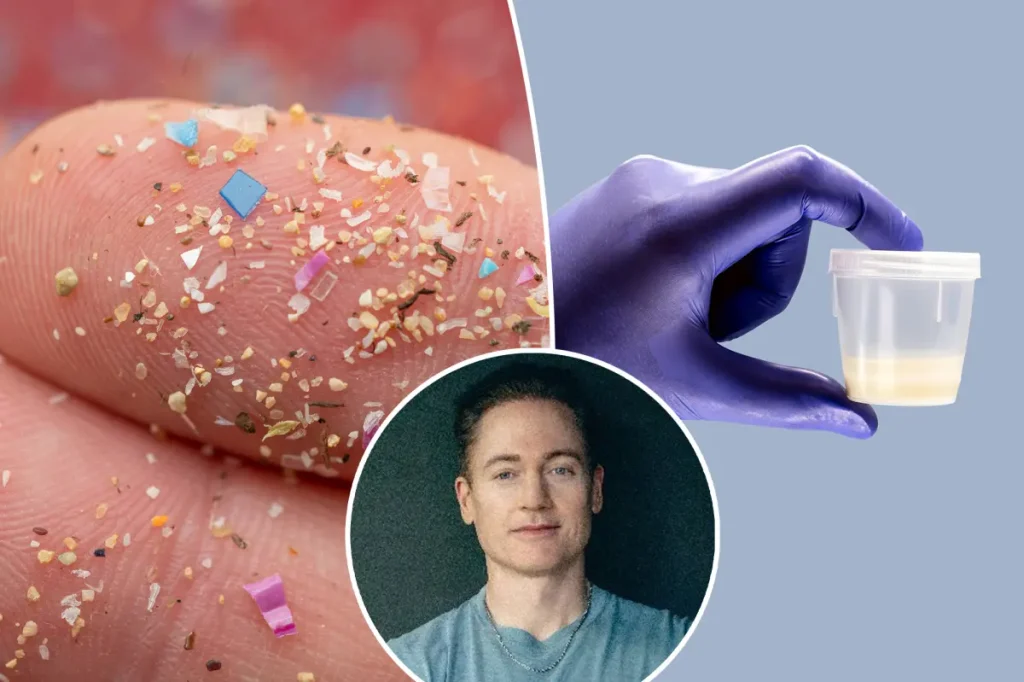Bryan Johnson’s Innovative Approach to Reducing Microplastics in His Body
In his ongoing pursuit of longevity and optimal health, renowned biohacker Bryan Johnson has turned his attention to an emerging concern in human health: microplastic contamination in the body. Johnson recently shared remarkable findings about his personal journey to reduce microplastics in his system, particularly in his reproductive health. According to data he shared on social media, Johnson managed to dramatically reduce the concentration of microplastics in his semen from 165 particles per milliliter in November 2024 to just 20 particles per milliliter by July 2025. This significant reduction represents an 88% decrease in microplastic particles, a result that Johnson attributes primarily to his consistent sauna therapy regimen. What makes this finding particularly interesting is that Johnson observed a nearly identical reduction in microplastics in his bloodstream during the same period, potentially establishing a correlation between blood and semen microplastic levels that hadn’t previously been documented in a single individual over multiple time points.
Johnson’s microplastic reduction strategy centers around daily 20-minute sessions in a dry sauna heated to 200 degrees Fahrenheit. Interestingly, he employs a unique modification to this traditional practice by applying an ice pack to his groin area during these sessions, which he believes helps “safeguard testicular and sperm health” from the potentially harmful effects of high heat exposure. While saunas are known to induce sweating that can release some toxins from the body, Johnson’s approach is particularly noteworthy because conventional wisdom and some research suggests that high heat exposure might actually have negative effects on sperm quality and production. The efficacy of Johnson’s ice pack modification hasn’t been well-studied in scientific literature, making his self-experimentation a potential area of interest for researchers. Beyond sauna therapy, Johnson has implemented other lifestyle changes to reduce his microplastic exposure, including avoiding common practices like microwaving food in plastic containers and using plastic cutting boards, while also installing a reverse osmosis water filtration system in his home.
The concern over microplastics in the human body is warranted and increasingly supported by scientific research. These tiny plastic fragments, smaller than a grain of rice, have become ubiquitous in our environment and consequently in our bodies. Researchers have detected microplastics in various human organs including the brain, heart, lungs, liver, and placenta. They’ve also been found in bodily fluids such as blood, saliva, urine, breast milk, and semen. While the complete health implications of microplastic accumulation in humans are still being investigated, preliminary research suggests these particles may disrupt hormone function and cause oxidative stress. In terms of reproductive health specifically, studies indicate that microplastics could potentially reduce sperm count and interfere with fertility, making Johnson’s focus on reducing these particles in his semen a rational health optimization strategy, particularly for someone focused on longevity and overall wellness.
The challenge with microplastics lies not only in their potential health effects but also in detecting and tracking their presence in our bodies. To address this issue, Johnson’s company Blueprint has developed what they claim is the first at-home microplastics testing kit, priced at $135. This kit takes a unique approach to prevent contamination during the testing process – instead of using standard plastic-encased lancets, the kit includes a metal lancet for users to prick their finger. The blood sample is then smeared on a card and processed by a laboratory, with results delivered via email within four to six weeks. However, the utility of these test results is somewhat limited as Blueprint doesn’t currently provide interpretation services, making it difficult for users to understand whether their microplastic levels are concerning or how to specifically address elevated levels.
For those concerned about microplastic exposure, experts generally recommend several practical approaches that don’t necessarily require specialized testing or extreme interventions. Common recommendations include avoiding single-use plastic bottles and utensils, switching to stainless steel water bottles instead of plastic ones, using glass rather than plastic for food storage, limiting consumption of heavily processed and packaged foods, and choosing clothing made from natural fibers instead of synthetic materials. These everyday choices can potentially reduce one’s overall exposure to microplastics, though completely eliminating these particles from our bodies may be virtually impossible given their prevalence in our environment. The growing awareness of microplastics as a potential health concern has led to increased research interest, but much remains unknown about their long-term effects on human health and the most effective methods for reducing their accumulation in our bodies.
Johnson’s experimental approach to health optimization represents a fascinating intersection of personal biohacking and emerging scientific concerns. While his methods may seem extreme to many – from his strict sauna regimen with targeted cooling to his comprehensive approach to avoiding plastic exposure – his systematic tracking and reporting of results provides interesting anecdotal data in an area where formal research is still developing. As with many of Johnson’s other longevity experiments, his microplastic reduction efforts raise important questions about the lengths to which individuals might go to optimize their health in the face of modern environmental challenges. Whether his specific approach will prove beneficial in the long term remains to be seen, but his work continues to highlight the growing concern about microplastics and other environmental contaminants that may affect human health in ways we’re only beginning to understand.















